Title search results
Showing 1 - 20 of 7611 items
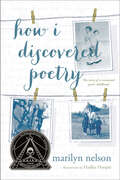
How I Discovered Poetry
By Marilyn Nelson. 2014
A powerful and thought-provoking Civil Rights era memoir from one of America’s most celebrated poets. Looking back on her childhood in…
the 1950s, Newbery Honor winner and National Book Award finalist Marilyn Nelson tells the story of her development as an artist and young woman through fifty eye-opening poems. Readers are given an intimate portrait of her growing self-awareness and artistic inspiration along with a larger view of the world around her: racial tensions, the Cold War era, and the first stirrings of the feminist movement. A first-person account of African-American history, this is a book to study, discuss, and treasure.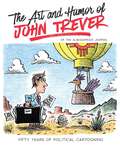
The Art and Humor of John Trever: Fifty Years of Political Cartooning
By John Trever. 2021
As the Albuquerque Journal&’s editorial cartoonist for nearly fifty years, John Trever provides insights into New Mexico&’s unique cartooning environment…
and the techniques and humor involved in the craft as he also shares his experiences covering local and national events and issues of the twenty-first century. The Art and Humor of John Trever: Fifty Years of Political Cartooning features the best, funniest, and most significant cartoons of Trever&’s career—showcasing his unique style, method, and voice—that captivated readers in New Mexico as well as readers throughout the United States through syndication. In addition, Trever provides anecdotes of how these drawings came to be and what kind of reactions they provoked, offers his thoughts about the state of editorial cartooning, and gives a frank account of what it takes to achieve, and sustain, a long career as a political mirror and as the political conscience of the Southwest.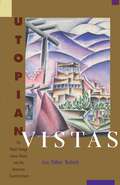
Utopian Vistas: The Mabel Dodge Luhan House and the American Counterculture
By Lois Palken Rudnick. 1996
Winner of the 1996 Gaspar Perez de Villegra Award from the Historical Society of New MexicoMabel Dodge Luhan, hostess and…
visionary, made Taos, New Mexico, a center for artists and utopians when she moved there in 1917 and began inviting friends to visit her. Now available in paperback, Utopian Vistas is a chronicle of the house Luhan built in Taos and the poets, painters, photographers, film-makers, writers, educators, and visionaries whose lives and works were affected by the house and its environs. Lois Rudnick weaves a complex tapestry depicting American countercultures in New Mexico from the 1920s to the 1990s.Should be required reading for art historians,film historians, ex-Beats and hippies, their children and grandchildren, and anyone interested in the possibility of making an imperfect America perfect at last.--Karal Ann Marling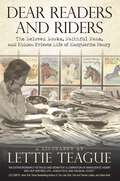
Dear Readers and Riders
By Lettie Teague. 2024
The untold story of the favorite children&’s book author, featuring original artwork by Wesley Dennis from some of Henry&’s best-known…
books, as well as over 100 personal photographs, letters, and artifacts. In certain circles, her name inspires immediate recognition and pronouncements of a committed admiration that has likely spanned decades. As an author, Marguerite Henry was indeed remarkably prolific, with 59 books published, millions of copies sold, and nearly 80 years of her life spent writing them—or responding personally to the stacks of fan mail she received—at her typewriter. Her books, most meticulously researched historical fiction about influential horses and the hosts of fascinating characters who surrounded them—to name just a few, her Newbery Award winner King of the Wind, the book that changed an island Misty of Chincoteague, and the glowingly reviewed Justin Morgan Had a Horse—have had an outsized influence on those who grew up reading them, ultimately leading to writing careers, lives dedicated to riding and caring for horses and other animals, and even fan memoirs describing Henry&’s impact. But despite a professional existence that became profoundly public, particularly after Misty of Chincoteague, published in 1947, became a bestseller and eventually a popular feature film in 1961, Henry&’s own life was mostly shielded from view. With particular purpose to uncover what is little known about the author, as well as superb instincts for illustrating fascinating details that help readers construct the settings in which Henry&’s creative mind, intensive historical and scholarly research, and storytelling ability matured and evolved, accomplished journalist and author Lettie Teague has provided a unique biography that is as much a pleasure to read as her subject&’s own books. Highlighting over a dozen titles that represent, to Teague, not only the best of Marguerite Henry&’s work but help tell the story of Marguerite Henry herself, and following the trail of some of her remarkable collaborators—most importantly, the charismatic and talented artist Wesley Dennis—Teague gives Henry fans what they always strived for through their thousands of letters: personal connection. Perhaps what Henry would deem less important, but becomes more and more valid as time passes, is Teague&’s desire for the author&’s legacy to live on. Many of Marguerite Henry&’s books are still very much in print, but as time passes, fewer will remember once writing her fan letters, or perhaps think of the author at all. In these pages, Teague ensures that Marguerite Henry the writer will always be considered as every bit as remarkable as the books that she wrote. Featuring original artwork by Wesley Dennis from some of Henry&’s best-known books, as well as over 100 personal photographs, letters, and artifacts few have seen, this is a warm and wonderful biography for bibliophiles, horse lovers, aspiring writers, and Marguerite Henry fans, young and old.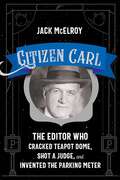
Educator, lawyer, editor, inventor, entrepreneur, and civic booster, Carl Magee helped shape New Mexico and Oklahoma in the years after…
gaining statehood, garnering fame along the way. Jack McElroy's fascinating biography of Citizen Carl tells the story of a man whose exploits were as diverse and complex as the American Southwest he loved.Magee purchased the Albuquerque Journal from the syndicate responsible for reelecting Senator Albert Bacon Fall, soon to become secretary of the Interior. Magee battled the Republican machine in New Mexico, a fight that sent Fall to prison in the Teapot Dome scandal and saw Magee repeatedly tried on charges of criminal libel, contempt of court, and even manslaughter. Forced to sell the Journal, he then started the newspaper that would become the Albuquerque Tribune.Magee's fame prompted Scripps-Howard to buy the Tribune, retaining him as editor and adopting his motto: Give Light and the People Will Find Their Own Way. The company later transferred Magee to its struggling paper in Oklahoma City. There he solved the city's downtown parking problem by inventing the parking meter.Now mostly forgotten, Magee's legacy lives on, and many of the issues he confronted--press freedom, gun violence, public corruption, and demagoguery--remain relevant today.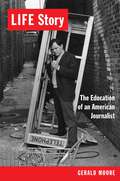
LIFE Story: The Education of an American Journalist
By Gerald Moore. 2016
Before Americans got their news from television, they got it from LIFE, the weekly magazine that set the standard for…
photojournalism. In LIFE Story Gerald Moore—a writer and editor who worked at the magazine in the last glory years before TV made it obsolete—recalls the dizzying excitement and glamour of LIFE&’s fast-moving, powerful approach to spreading the news. Moore covered the major stories of the late 1960s and early 1970s: LSD, assassinations, the 1968 Democratic convention in Chicago, the McCarthy campaign, urban riots, the My Lai massacre, and the beginnings of feminism. Before joining LIFE at the age of twenty-seven, he worked as a police officer in Albuquerque and then a reporter at the Albuquerque Tribune—both jobs teaching him the tools of his trade. His story offers a wonderful look back at the good and the bad old days of journalism.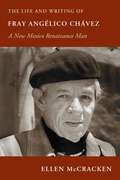
Winner of the Southwest Book Award from the Border Regional Library Association As a teenager, Manuel Chávez (1910-1996) left his…
native New Mexico for over a decade of study at the St. Francis Seraphic Seminary in Cincinnati, Ohio, and other midwestern institutions. Included in his curriculum was an introduction to literature and the arts that piqued an interest that would follow him the remainder of his life. Upon returning to New Mexico, he was ordained Fray Angélico Chávez and would become one of New Mexico's most important twentieth-century writers. In The Life and Writing of Fray Angélico Chávez, Ellen McCracken provides a literary biography that includes a deep look into the intellectual and cultural contributions of this Renaissance man. McCracken moves chronologically through a substantial body of work that includes fiction, poetry, plays, essays, spiritual tracts, sermons, historical writing, translation, painting, church renovation, and journalism. From the prolific creativity of the years of his first assignment in Peña Blanca to the decades he spent researching Hispano genealogy in New Mexico, McCracken traces Chávez's complex and changing identity as an ethnic American and religious subject who was also an historian, artist, creative writer, and preservationist. The year 2010 will mark the centenary of Fray Angélico Chávez's birth, and this volume will serve as a fitting tribute.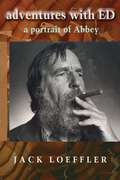
Adventures with Ed: A Portrait of Abbey
By Jack Loeffler. 2002
No writer has had a greater influence on the American West than Edward Abbey (1927-89), author of twenty-one books of…
fiction and nonfiction. This long-awaited biographical memoir by one of Abbey's closest friends is a tribute to the gadfly anarchist who popularized environmental activism in his novel The Monkey Wrench Gang and articulated the spirit of the arid West in Desert Solitaire and scores of other essays and articles. In the course of a twenty-year friendship Ed Abbey and Jack Loeffler shared hundreds of campfires, hiked thousands of miles, and talked endlessly about the meaning of life. To read Loeffler's account of his best pal's life and work is to join in their friendship.Born and raised in Pennsylvania, Abbey came west to attend the University of New Mexico on the G.I. Bill. His natural inclination toward anarchism led him to study philosophy, but after earning an M.A. he rejected academic life and worked off and on for years as a backcountry ranger and fire lookout around the Southwest. His 1956 novel The Brave Cowboy launched his literary career, and by the 1970s he was recognized as an important, uniquely American voice. Abbey used his talents to protest against the mining and development of the American West. By the time of his death he had become an idol to environmentalists, writers, and free spirits all over the West.Ed Abbey and Jack Loeffler were like Don Quijote and Sancho Panza. Loeffler delivers his friend, warts and all on a platter full of reverence and irreverence and carefully researched factual information, interspersed with hearty laughter and much serious consideration of all life's Great Questions. Jack's story elucidates and demythifies the Abbey legend, giving us powerful flesh and blood instead.--John Nichols
I Got Mine: Confessions of a Midlist Writer
By John Nichols. 2022
I Got Mine: Confessions of a Midlist Writer is the memoir of Nichols&’ extraordinary life, as seen through the lens…
of his writing. Everything that went into making him a writer and eventually found an outlet in his work—his education, family, wives, children, friends, enemies, politics, and place—is told from the point of view of his daily practice of writing.Beginning with his first novel, The Sterile Cuckoo, published in 1965 when he was just twenty-four, Nichols shares his highs and lows: his ambivalent relationship with money; his growing disenchantment with the hypocrisy of capitalism; and his love-hate relationship with Hollywood—including the years-long struggle of working with director Robert Redford on the film version of The Milagro Beanfield War, which was filmed around Truchas and featured many of Nichols&’ northern New Mexico neighbors.Throughout I Got Mine Nichols spins a shining thread connecting his lifelong engagement with progressive political causes, his passionate interest in and identification with ordinary people, and his deep connection to the land.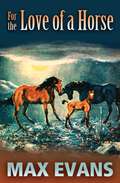
For the Love of a Horse
By Max Evans. 2007
In his eighty-plus years, Max Evans has known, owned, ridden, and been thrown by quite a number of horses. In…
For the Love of a Horse, Evans shares his favorite horse stories for all to enjoy. As Max explains, I wanted a wide range of adventures from another time, with different horses, of different breeds, and a sense of history of those special days. Max begins with his first horse, Cricket, which he received when he was four years old. At the age of ten, he helped with a horse-drive from far southeast New Mexico, through west Texas, and on to the final destination in Guymon, Oklahoma. Later, PDQ was a horse that seemed very gentle and laid-back, until someone rode him. And then there was Molly, who liked to fly through and around obstacles on coyote hunts.This book is for all those who enjoy reading horse stories as much as Max loves telling them. Saddle up! The recognition is long overdue. (Max Evans is) sui generis. He understands the present West better than anyone else, what it's like to be there now living in two worlds of the pickup truck and the bronco.--Charles Champlin, former Denver bureau chief of Time and retired arts editor of The Los Angeles Times, quoted in The New York Times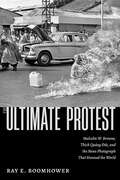
The Ultimate Protest: Malcolm W. Browne, Thich Quang Duc, and the News Photograph That Stunned the World
By Ray E. Boomhower. 2024
The Ultimate Protest: Malcolm W. Browne, Thich Quang Duc, and the News Photograph That Stunned the World examines how the…
most unlikely of war correspondents, Malcolm W. Browne, became the only Western reporter to capture Buddhist monk Thich Quang Duc's horrific self-immolation on June 11, 1963. Quang Duc made his ultimate sacrifice to protest the perceived anti-Buddhist policies of the Catholic-dominated administration of South Vietnam's president Ngo Dinh Diem.Biographer Ray E. Boomhower's The Ultimate Protest explores the background of the Buddhist crisis in South Vietnam in the spring of 1963 that led to Quang Duc's self-sacrifice as well as the worldwide reaction to Browne's photograph, how it affected American policy toward Diem's government, and the role the image played in the violent coup on November 1, 1963, that deposed Diem and led to his assassination. The book also delves into the dynamics involved in covering the Vietnam War in the early days of the American presence and the pressures placed on the journalists to stop raising doubts about how the war was going. Browne and his colleague David Halberstam shared the 1964 Pulitzer Prize for international reporting for their work in Vietnam.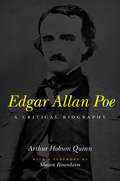
Edgar Allan Poe: A Critical Biography
By Arthur Hobson Quinn. 1998
Now in paperback—the classic, monumental biography of Poe by Arthur Hobson Quinn.Renowned as the creator of the detective story and…
a master of horror, the author of "The Red Mask of Death," "The Black Cat," and "The Murders of the Rue Morgue," Edgar Allan Poe seems to have derived his success from suffering and to have suffered from his success. "The Raven" and "The Tell-Tale Heart" have been read as signs of his personal obsessions, and "The Fall of the House of Usher" and "The Descent into the Maelstrom" as symptoms of his own mental collapse. Biographers have seldom resisted the opportunities to confuse the pathologies in the stories with the events in Poe's life. Against this tide of fancy, guesses, and amateur psychologizing, Arthur Hobson Quinn's biography devotes itself meticulously to facts. Based on exhaustive research in the Poe family archive, Quinn extracts the life from the legend, and describes how they both were distorted by prior biographies.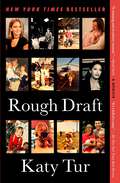
Rough Draft: A Memoir
By Katy Tur. 2007
INSTANT NEW YORK TIMES BESTSELLER &“It&’s a hell of a story.&” —The New York Times &“A stunning and revelatory memoir.&”…
—Oprah Daily From MSNBC anchor and instant New York Times bestselling author Katy Tur, a shocking and deeply personal memoir about a life spent chasing the news.When a box from her mother showed up on Katy Tur&’s doorstep, months into the pandemic and just as she learned she was pregnant with her second child, she didn&’t know what to expect. The box contained thousands of hours of video—the work of her pioneering helicopter journalist parents. They grew rich and famous for their aerial coverage of Madonna and Sean Penn&’s secret wedding, the Reginald Denny beating in the 1992 Los Angeles riots, and O.J. Simpson&’s notorious run in the white Bronco. To Tur, these family videos were an inheritance of sorts, and a reminder of who she was before her own breakout success as a reporter. In Rough Draft, Tur writes about her eccentric and volatile California childhood, punctuated by forest fires, earthquakes, and police chases—all seen from a thousand feet in the air. She recounts her complicated relationship with a father who was magnetic, ambitious, and, at times, frightening. And she charts her own survival from local reporter to globe-trotting foreign correspondent, running from her past. Tur also opens up for the first time about her struggles with burnout and impostor syndrome, her stumbles in the anchor chair, and her relationship with CBS Mornings anchor Tony Dokoupil (who quite possibly had a crazier childhood than she did). Intimate and captivating, Rough Draft explores the gift and curse of family legacy, examines the roles and responsibilities of the news, and asks the question: To what extent do we each get to write our own story?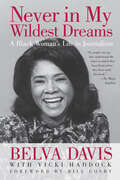
Never in My Wildest Dreams: A Black Woman's Life in Journalism
By Belva Davis, Vicki Haddock. 2010
As the first black female television journalist in the western United States, Belva Davis overcame the obstacles of racism and…
sexism, and helped change the face and focus of television news. Now she is sharing the story of her extraordinary life in her poignantly honest memoir, Never in My Wildest Dreams. A reporter for almost five decades, Davis is no stranger to adversity. Born to a fifteen-year-old Louisiana laundress during the Great Depression, and raised in the overcrowded projects of Oakland, California, Davis suffered abuse, battled rejection, and persevered to achieve a career beyond her imagination. Davis has seen the world change in ways she never could have envisioned, from being verbally and physically attacked while reporting on the 1964 Republican National Convention in San Francisco to witnessing the historic election of Barack Obama in 2008. Davis worked her way up to reporting on many of the most explosive stories of recent times, including the Vietnam War protests, the rise and fall of the Black Panthers, the Peoples Temple cult mass suicides at Jonestown, the assassinations of San Francisco Mayor George Moscone and Supervisor Harvey Milk, the onset of the AIDS epidemic, and the aftermath of the terrorist attacks that first put Osama bin Laden on the FBI’s Most Wanted List. She encountered a cavalcade of cultural icons: Malcolm X, Frank Sinatra, James Brown, Ronald Reagan, Huey Newton, Muhammad Ali, Alex Haley, Fidel Castro, Dianne Feinstein, Condoleezza Rice, and others. Throughout her career Davis soldiered in the trenches in the battle for racial equality and brought stories of black Americans out of the shadows and into the light of day. Still active in her seventies, Davis, the “Walter Cronkite of the Bay Area,” now hosts a weekly news roundtable and special reports at KQED, one of the nation’s leading PBS stations,. In this way she has remained relevant and engaged in the stories of today, while offering her anecdote-rich perspective on the decades that have shaped us. “No people can say they understand the times in which they have lived unless they have read this book.” — Dr. Maya Angelou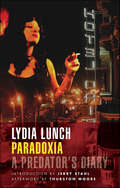
Paradoxia: A Predator's Diary
By Lydia Lunch. 2003
The unspeakable sexual confessions of underground legend Lydia Lunch.—Included in Flavorwire’s “An Essential Punk Literature Reading List"“Paradoxia is compelling, exhilarating, and…
infinitely readable.” —PaperParadoxia contains frank and often shocking confessions. Lydia Lunch relays in graphic detail a predator’s diary, revealing the true psychic repercussions of sexual misadventure. From New York to London to New Orleans, Paradoxia is an uncensored, novelized account of one woman’s assault on the male of the species.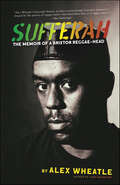
Sufferah: The Memoir of a Brixton Reggae-Head
By Alex Wheatle. 2023
In this breathtaking memoir, acclaimed author Alex Wheatle details how reggae music became his salvation through a childhood marred by…
abuse, imprisonment, and police brutality.—Selected for the In the Margins Book Awards 2024 Top Ten Title List and 2024 Nonfiction Recommendation List "In this inspiring, often harrowing narrative, the author chronicles how, shortly after he turned 3, he was abandoned by his parents and placed in the care of the government. That led to a childhood of physical and sexual abuse on top of the racism and police brutality he experienced growing up in Brixton, England, in the 1970s and ’80s . . . As dark as his early memories are, Wheatle describes his reggae memories with glimmers of hope and appreciation . . . A striking tribute to reggae’s ability to protect a fragile soul when seemingly everything else had failed him." —Kirkus Reviews, Starred ReviewAbandoned as a baby to the British foster care system, Alex Wheatle grew up without any knowledge of his Jamaican parentage or family history. Preoccupied with his own roots, Alex grew inexorably drawn to reggae music, which became his primary solace through years of physical and mental abuse in a children’s home. Although riven by loneliness and depression, Alex found joy and empathy among his reggae heroes: Dennis Brown, Bob Marley, Marcia Griffiths, the Mighty Diamonds, Sister Nancy, Gregory Isaacs, Barrington Levy, King Yellowman, and so many others. These were friends and mentors who understood the enormous challenges facing a young Black man, gave purpose to despair, provided a sense of belonging when Alex had no one, and who educated him in ways no school ever could. From the abuse he suffered in foster care, to the challenges he faced on the streets of South London as a young man and his eventual imprisonment for participating in the legendary 1981 Brixton uprising against racial injustice, reggae music always provided a lifeline to Alex. Alex’s life story was portrayed in Oscar Award–winning director Steve McQueen’s 2020 Small Axe. In Sufferah, he vividly tells his own story, putting the reader in his shoes through the many challenges of his younger years, answering the question: how on earth did he make it? By his example we are reminded that words can be our sustenance, and music can be our heartbeat.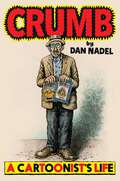
Crumb: A Cartoonist's Life
By Dan Nadel. 1972
&“A definitive and ideal biography—pound for pound, one of the sleekest and most judicious I&’ve ever read.&” —Dwight Garner, The…
New York Times A critical darling, Crumb is the first biography of Robert Crumb—one of the most profound and influential artists of the 20th century—whose frank, and meticulously rendered cartoons and comics inspired generations of readers and cartoonists, from Art Spiegelman to Alison Bechdel.Robert Crumb is often credited with single-handedly transforming the comics medium into a place for adult expression, in the process pioneering the underground comic book industry, and transforming the vernacular language of 20th-century America into an instantly recognizable and popular aesthetic. Now, for the first time, Dan Nadel, delivers a &“gripping and essential account&” (The Boston Globe) of how this complicated artist survived childhood abuse, fame in his twenties, more fame, and came out the other side intact. Braiding biography with &“cultural history and criticism...that honors the complexity of [its] subject, even, perhaps particularly, when it gets ugly&” (Los Angeles Times), Crumb is the story of a richly complex life at the forefront of both the underground and popular cultures of post-war America. Including forty-five stunning black-and-white images throughout and a sixteen-page color insert featuring images both iconic and obscure, Crumb spans the pressures of 1950s suburban America and Crumb&’s highly dysfunctional early family life; the history of comics and graphic satire; 20th-century popular music; the world of the counterculture; the birth of underground comic books in 1960s San Francisco with Crumb&’s Zap Comix; the economic challenges and dissolution of the hippie dream; and the path Robert Crumb blazed through it all. Written with Crumb&’s cooperation, this fascinating, rollicking book takes in seven decades of Crumb&’s iconic works, including Fritz the Cat, Weirdo, and his adaptation of The Book of Genesis and &“floats Crumb on the rapids of his times&” (Harper&’s Magazine), capturing, in the process, the essence of an extraordinary artist.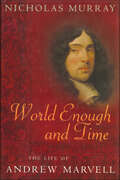
World Enough and Time: The Life of Andrew Marvell
By Nicholas Murray. 1999
Although the century which followed Andrew Marvell's death remembered him primarily as a politician and a pamphleteer, this gifted poet…
is responsible for some of the most brilliant lyric exploration of his time. World Enough and Time is an extensive biography written by Nicholas Murray, a biographer whose literary scholarship and political astuteness matches that of his subject.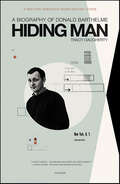
Hiding Man: A Biography of Donald Barthelme
By Tracy Daugherty. 2009
In the 1960s Donald Barthelme came to prominence as the leader of the Postmodern movement. He was a fixture at…
the New Yorker, publishing more than 100 short stories, including such masterpieces as "Me and Miss Mandible," the tale of a thirty-five-year-old sent to elementary school by clerical error, and "A Shower of Gold," in which a sculptor agrees to appear on the existentialist game show Who Am I? He had a dynamic relationship with his father that influenced much of his fiction. He worked as an editor, a designer, a curator, a news reporter, and a teacher. He was at the forefront of literary Greenwich Village which saw him develop lasting friendships with Thomas Pynchon, Kurt Vonnegut, Tom Wolfe, Grace Paley, and Norman Mailer. Married four times, he had a volatile private life. He died of cancer in 1989. The recipient of many prestigious literary awards, he is best remembered for the classic novels Snow White, The Dead Father, and many short stories, all of which remain in print today. Hiding Man is the first biography of Donald Barthelme, and it is nothing short of a masterpiece.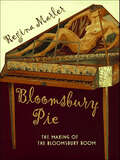
Bloomsbury Pie: The Making of the Bloomsbury Boom
By Regina Marler. 1994
Celebrated and maligned with equal vigor, the Bloomsbury Group is the best-documented artistic coterie in twentieth-century literature. The novelists Virgonia…
Woolf and E.M. Forster, the artists Roger Fry, Duncan Grant, and Vanessa Bell, and the economist John Maynard Keynes were among this charmed circle that emerged in London before the First World War and came to exercise a complex, lingering influence on English art and letters. Theirs was a world of great talent--even genius--sexual intrigue, and gossip; they cultivated an atmosphere in which it was possible to say anything, do anything. Their peak of influence in the 1920s was followed by forty years of sustained sidelong derogation, and occasional frontal attack, from such famously hostile critics as D.H. Larence and Wyndham Lewis, until, in the 1960s, the idea of Bloomsbury exploded in the public imagination, transforming the Group into an almost mass-market attraction.Not in their darkest nightmares could Bloomsbury's contemporary detractors have imagined that Charleston Farmhouse, where Vanessa Bell and Duncan Grant once lived and painted, would eventually attract some 15,000 visitors each year, or that a high-profile film, Carrington, would be based on Lytton Strachey's largely platonic love affair with an obscure artist on the fringes of the hallowed Group. Bloomsbury Pie examines the persistent allure of Bloomsbury--a fascination driven by nostalgia, adoration, and antipathy--and tracks the resurgence of interest in the Group, from a handful of biographies in the 1960s through the feminist discovery of Virginia Woolf in the 1970s and the enshrinement of the Bloomsberries as cultural icons in the 1980s and 1990s. Drawing on a wealth of material generated by this revival, Regina Marler chronicles the story of the Bloomsbury boom--its scholars, collectors, and fanatics and explores the industry it has spawned among writers, publishers, and art dealers. In the proces she creates an impressive social history of a tenacious and unwieldy cultural phenomenon.